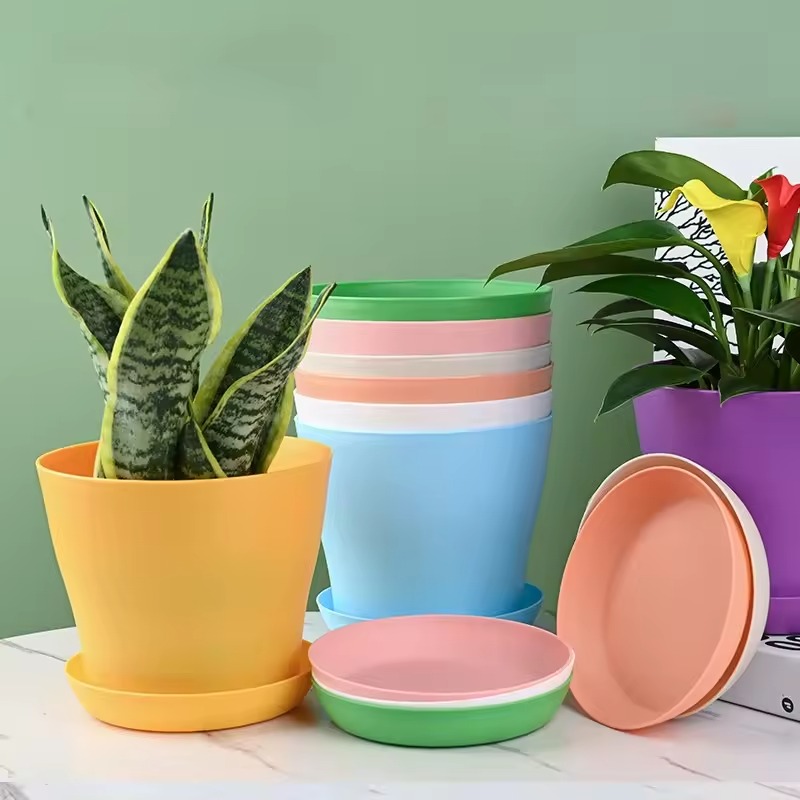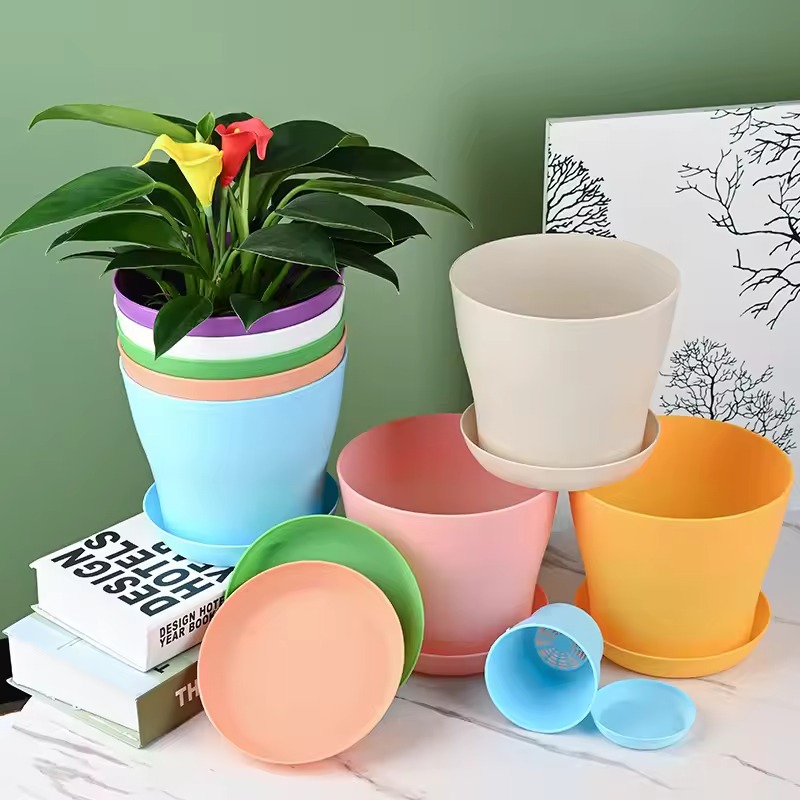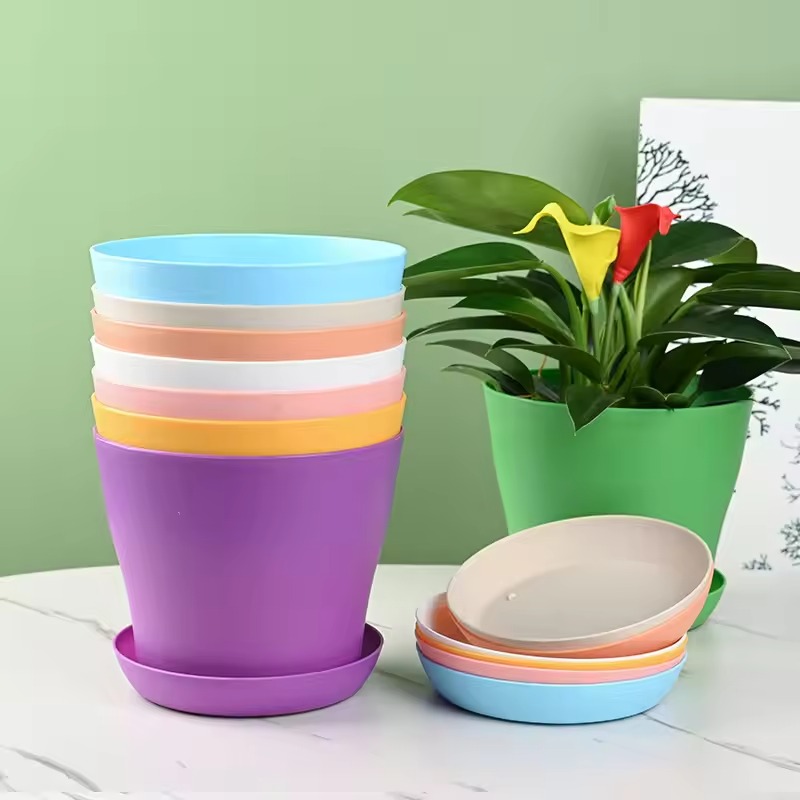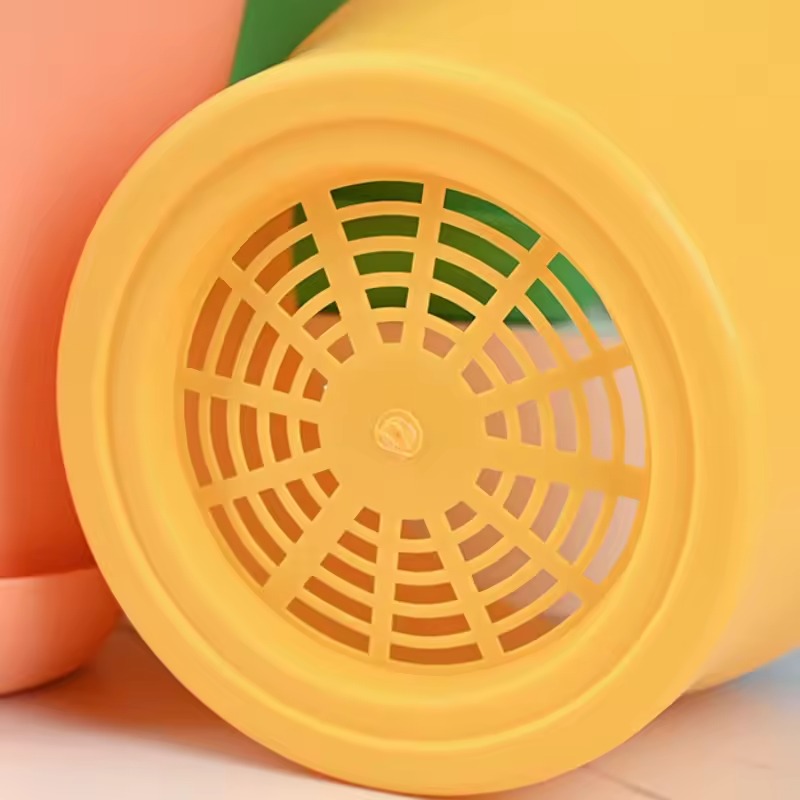Introduction to Painting Plastic Flower Pots
Enhancing your garden’s charm can be as simple as painting plastic flower pots. Whether seeking a fresh look for your outdoor oasis or aiming to express your creative flair, painting plastic containers can be both rewarding and straightforward. Before diving into the ocean of colors and designs, let’s gear up for a successful painting experience.
Preparing for Plastic Pot Painting
Getting your plastic pots ready for a makeover involves a few crucial steps. Start by giving your pots a thorough wash. Removing dirt, grime, and any oily residues is key to ensuring the paint adheres well. Once clean, grab some sandpaper. Gently scuff the pot’s surface to create a texture that the paint can cling to. After sanding, it’s important to wipe away all the dust. Now, with your pot prepped and primed, you’re set to embark on the exciting journey of pot painting.

Essential Materials Needed
Before you start painting your plastic flower pots, gather all necessary materials. You will need brushes, paints, sandpaper, and protective sealants. Make sure your workspace is covered, and you have cleaning supplies on hand. Good preparation ensures a smoother painting process.
Acrylic vs. Spray Paint Options
For painting plastic flower pots, you have two main paint options: acrylic and spray paint. Acrylic paints are user-friendly and offer a wide range of colors. They’re perfect for detailed designs but might require several layers. Spray paints provide a quick and even coat, ideal for larger pots or simpler color schemes. Choose acrylics for precision, or spray paints for speed.
Step-by-Step Guide to Painting With Acrylics
Painting plastic flower pots with acrylics is easy and fun. Here is a guide to help you get started.
Surface Preparations
Start with a clean, dry pot. Wash away dirt with soapy water. Dry it well. Sand the pot to make the surface rough. This helps the paint stick better. Wipe off the sanding dust before you paint.
Designing and Painting Techniques
Choose your paint colors. Think of a design you like. Use a pencil to sketch it on the pot if needed. Start with light coats of paint. Let each layer dry before adding another. You might need a few layers for solid coverage.
Applying Sealants
Once the paint is dry, apply a sealant. This protects your design from the elements. Use a clear outdoor sealant for the best protection. Spray or brush it on evenly. Let the sealant dry completely before using the pot outdoors.
Using Spray Paint for Quick Results
For those looking to finish their projects swiftly, spray paint is the way to go. It streamlines the painting process, allowing you to cover larger areas quickly and with less effort compared to brush painting. However, it’s imperative to approach this method with caution and proper preparation.
Necessary Precautions and Setup
When you’re ready to use spray paint, make sure you’re in a well-ventilated area. Prefer outdoor spaces to keep fumes away. If you must work indoors, open windows and use fans. Always wear a mask; a respirator is best to avoid breathing in chemicals. Also, protect surfaces around you. Lay down sheets or use cardboard to catch overspray. Keep your pot elevated on a platform to reach all angles easily.
Detailed Spray Painting Procedure
- Clean the pot thoroughly with soapy water. Rinse and let it dry.
- Sand the pot to remove glossiness, creating a suitable texture for painting.
- Once dry, take your spray paint and shake the can for a minute.
- Apply the first coat of paint holding the can about 12 inches from the pot. Use even, sweeping motions.
- Let the first coat dry as per paint instructions, usually within a few hours.
- Apply a second coat if necessary for better coverage.
- After the final coat, wait for the paint to cure. This may take 24 hours or more.
- If desired, apply a clear sealant spray to protect the paint job.
By following these steps, you’ll achieve a smooth, professional look on your plastic flower pots. Remember to let each coat dry fully before applying the next for the best results.

FAQs on Painting Plastic Pots
Navigating the nuances of painting plastic flower pots often results in questions needing clear answers. Here, we address some frequently asked questions to help guide your project to success.
Choosing the Right Type of Paint
Selecting the appropriate paint for plastic pots is crucial. Common wall or wood paints aren’t suitable as they may not adhere well and can peel or chip. Instead, opt for paints specifically designed for plastic such as acrylic or spray paints. These ensure better durability and aesthetics. Acrylic paints are ideal for detailed work, while spray paints offer quicker application for larger surfaces.
Best Practices for Durable Results
For long-lasting results, follow these key practices:
- Preparation: Clean and sand the pot thoroughly to remove glossiness and improve paint adhesion.
- Painting: Apply thin, even layers of paint, allowing sufficient drying time between coats.
- Sealing: After the paint has dried, apply a suitable sealant to protect against weather and UV damage, especially if the pot will be placed outdoors.
These tips not only improve the appearance but also extend the life of your painted plastic pots.
Environmental Considerations
When painting plastic flower pots for your garden, consider the environmental impact. It’s important to choose eco-friendly methods.
Eco-friendly Painting Tips
- Select Non-Toxic Paints: Opt for water-based acrylic paints. They have fewer harmful chemicals. Always check the label for ‘non-toxic’ certification.
- Use Reusable Materials: Use existing brushes and containers for mixing paints. Avoid disposable items that add to waste.
- Proper Disposal of Waste: Clean brushes in a sink, not outdoors. Dispose of any leftover paint according to local regulations.
- Recycle Old Pots: Instead of buying new pots, repaint old ones. This reduces plastic waste.
- Natural Light Setup: Paint in natural light when possible. It reduces electricity use.
- Limit Spray Paint Use: Although quicker, spray paints often contain VOCs (Volatile Organic Compounds). If you use them, choose eco-friendly brands. Always use them outdoors to minimize indoor air pollution.
By following these tips, you can enjoy a revamp of your garden. At the same time, you keep environmental health in mind.

Conclusion
In this blog, we explored the engaging world of painting plastic flower pots. Painting your garden pots can unleash your creativity and breathe new life into your outdoor space. Whether using acrylic paint for its vast color selection and detailed work, or spray paint for its swift and even coverage, both methods promise delightful results.
Recap of Methods and Encouragement to Start Painting
We discussed preparing your pots with a good wash and sanding to help paint stick. We looked at both acrylic and spray paint as suitable options. Acrylics are perfect for custom designs, while spray paints are great for quick and large jobs. We also covered the importance of sealants to protect your artwork.
Remember to stay safe by setting up in well-ventilated areas and wearing masks, especially when spray painting. And for eco-friendliness, choose non-toxic paints and dispose of waste properly.
Why not give your plastic flower pots a makeover this weekend? With simple steps, you can transform them into eye-catching pieces. Start small or go bold. Either way, let your garden express your unique style. Happy painting!
